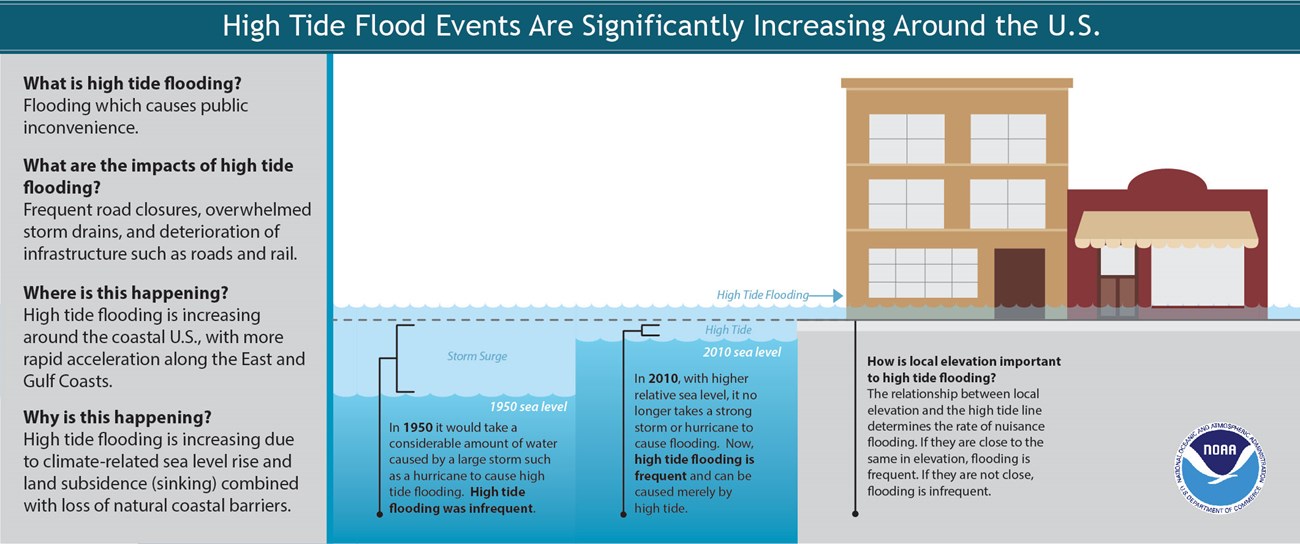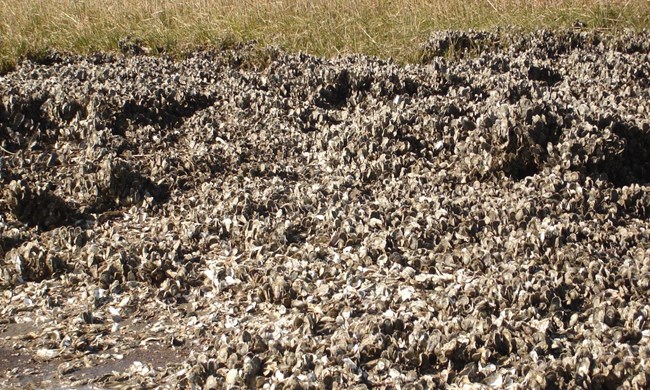Part of a series of articles titled Coastal Geohazards.
Article
Coastal Geohazards—Nuisance Flooding
Nuisance flooding is temporary but recurrent shallow flooding along coastlines that causes public inconvenience. This may be in the form of frequently washed out beaches, road closures, closed storm drains, or deterioration of low lying infrastructure. This type of recurrent flooding occurs in areas where local elevation is near that of the high tide line. These locations are prone to more frequent flooding. Nuisance flooding in coastal zones is becoming increasingly common as sea level rise continues to progress; ultimately raising the average high tide line. However, unlike storm surge which has infrequent but high impact, nuisance flooding is low impact yet recurrent.

Nuisance flooding is particularly likely in susceptible areas during ‘perigean spring tides’, or abnormally high tides caused by earth's alignment and proximity to the moon and the sun. They are predictable and occur a couple of times each year; often increasing high tide by several inches. The highest of high tides are more commonly known as ‘King tides’. The impacts of King tides on coastal areas is heighted when coupled with additional factors such as strong onshore winds, rain, or large swells.

Geologic features like barrier islands, barrier spits, and dunes along with living structures such as oyster reefs, coral reefs, and mangroves can act as buffers to the physical processes that contribute to nuisance flooding. These natural features protect coastlines by dissipating wave energy that might otherwise cause a high tide to become a local flooding event.
Examples of our parks that are vulnerable to nuisance flooding are those with low lying topography like Point Reyes National Seashore and Golden Gate National Recreation Area in California. Parks and preserves in the southern end of Florida are especially vulnerable to encroachment from the sea. With elevations nearing that of sea level, Everglades National Park, Big Cypress National Preserve, Dry Tortugas National Park, and Biscayne National Park are at risk of recurrent flooding events. In particular, scientists in Everglades National Park have shown a shift from steady increase to accelerated change in the number of low-level inundation events over the last few decades (Park et al., 2017). These flood zones provide insight to areas that are at risk of more permanent inundation if projected sea level rise scenarios occur.
Read More
-
Park, J., E. Stabenau, and K. Kotun. 2017. Sea-level rise and inundation scenarios for national parks in South Florida. Park Science 33(1):63–73.
-
NOAA—About Perigean Spring Tides
- For predicted high-high tides near you see the NOAA High Tide Flooding Bulletin
- Big Cypress National Preserve, Florida [Geodiversity Atlas] [Park Home]
- Biscayne National Park, Florida [Geodiversity Atlas] [Park Home]
- Dry Tortugas National Park, Florida [Geodiversity Atlas] [Park Home]
- Everglades National Park, Florida [Geodiversity Atlas] [Park Home]
- Golden Gate National Recreation Area, California [Geodiversity Atlas] [Park Home]
- Point Reyes National Seashore, California [Geodiversity Atlas] [Park Home]
Last updated: September 10, 2018
